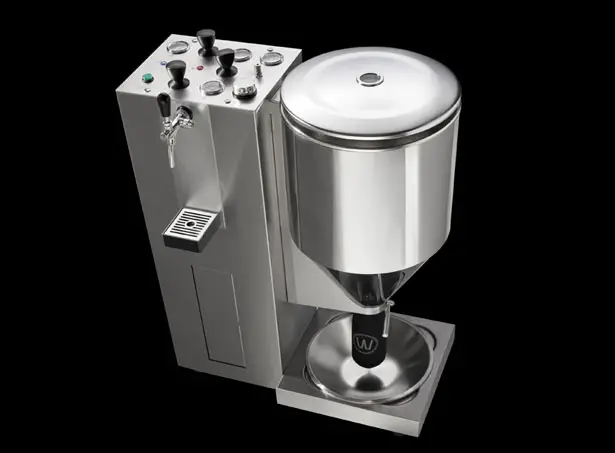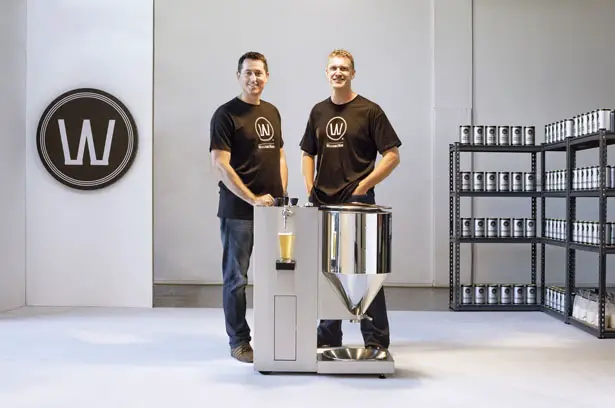Great Blue Hole (Belize)

Located in Belize's Barrier Reef Reserve System, the "Great Blue Hole" is about 60 miles away from Belize City and is believed to be the world's largest sea-hole. It's 125 meters deep and 300 meters wide. It was created as a cause of sea level increase about 65,000 years ago.
Its almost perfect circular shape made it very popular among tourists who often visit this place, being the most attractive for scuba divers who are exploring its depths. Divers are also attracted with plenty of rare animal species and forms of life which can be found only in this place.
Diavik Mine (Canada)

The Diavik Diamond Mine is about 300 kilometers (186 miles) north of Yellowknife in Canada. It produces 8 million carats (3,500 lb) of diamonds annually. The mine is so huge and the area so remote that it even has its own airport with a runway large enough to accommodate a boeing 737. Photo Courtesy of The Diavik Diamond Mine".
The Burning Gates (Turkmenistan)

In the heart of the Karakum desert of Turkmenistan, the Darvaza Gas Crater or The Burning Gates give off a glow that can be seen from miles away during the dark night. The large crater is a result of a Soviet gas exploration accident in the 1950's. It was created when a Soviet drilling rig was drilling for natural gas and fell into an underground cavern resulting in a crater which today measures roughly 60 meters in diameter and 20 meters deep. The huge crater was set alight shortly after being discovered and has been burning ever since. The smell of burning sulfur can be detected from a distance and becomes quite strong as you near the hot edge of the crater.
Glory Hole, Monticello Dam (California - US)

Located in northern California, the Monticello Dam is the largest morning glory spillway all over the world. This funnel-shaped outlet, allows water to bypass the dam when it reaches capacity, as it swallows a rate of 48,400 cubic feet per second (1370 m³/s).The distance from the funnel to the exit point - which is situated in the south side of the canyon - is about 700 feet. This type of spillway is basically a giant cement funnel. The hole's largest diameter is 72 feet and narrows to about 28 feet. For obvious reasons, swimming near the glory hole is both prohibited and stupid. There are buoys strung across the lake to discourage boaters and swimmers from approaching the glory hole and the dam. Furthermore, the glory hole is well fenced off from the land. During the drier months, when Lake Berryessa's water level is well below the rim of the glory hole, skateboarders and bikers sometimes use the spillway's horizontal exit as a half-pipe.
Bingham Canyon Mine (Utah - US)

Bingham Canyon Mine is the largest man-made excavation on earth. Also called Kennecott Copper Mine, it is an open-pit mine located in Salt Lake County, Utah. It is easily visible as a large layered multi-color, barren protrusion on the side of the Oquirrh Mountains, which lie on the west side of the Salt Lake Valley. It is currently the largest open-pit mine in the world, and the world's largest man-made excavation. The mine is 2½ miles across, and ¾ mile deep.
Kennecott is the second largest copper producer in the United States - providing approximately 15% of the country's copper needs. Minerals were first discovered in Bingham Canyon in 1850, but exploitation did not begin until 1863. At first, mining was difficult, but a railroad reached the canyon in 1873, prompting massive settlement and extraction of the minerals. By the 1920s, 15,000 people of widely-varying ethnicity had settled in the canyon. Large residential communities were constructed on the steep canyon walls. Natural disasters were a common occurrence in the heavily-settled canyon. The population declined rapidly as mining techniques improved, and several of the mining camps began to be swallowed up by the mine. By 1980, when Lark was dismantled, only Copperton, at the mouth of Bingham Canyon and with a population of 800, remained. Today, mining operations continue at full-swing in the mine, and it is now the largest open-pit mine in the world.
Mirny Diamond Mine (Siberia)

It's an absolute beast and holds the title of largest open diamond mine in the world. The mine is 525 meters (1,722 ft) deep and has a diameter of 1,200 m (3,900 ft), [1] and is the second largest excavated hole in the world, after Bingham Canyon Mine. The airspace above the mine is closed for helicopters because of a few incidents in which they were sucked in by the downward air flow.
Kimberley Big Hole (South Africa)

Kimberley is the home of De Beers Consolidated Diamond Mines, some of the world's richest diamond mines, and it is still considered to be the capital of the world's diamond industry. As the centre for the diamond fever of the late 19th century, its foundations began to be dug in 1871 when a diamond was found on a small hill called Colesberg Koppie. Digging began and only a few months later more than 30 000 men were frantically excavating for diamonds in an area covering 300m by 200m. They made short work of the hill and soon plunged down into the earth to a depth of 1100 metres to create what came to be known simply as the 'Big Hole'. 28 million tons of dirt was removed, yielding 14.5 million carats of diamonds and resulting in the creation of the largest man made hole in the world. It was here that the famous Star of Africa was found, a magnificent 83.5 carat diamond.
Well Of Chand Baori (India)

Built back in the 10th century, the incredible well of Chand Baori, India, was a practical solution to the water problem in the area. The arid climate forced the locals to dig deep for a dependable water source, one that would last throughout an entire year. Chand Baori well is 30 meters deep, it has 13 floors and 3,500 steps. Legends say that ghosts build it in one night and that it has so many steps to make it impossible for someone to retrieve a coin once it's been dropped in the well.
200ft Sinkhole (Guatemala)

This is the scene in Guatemala after a 200ft deep sink hole swallowed up a three-story building. The enormous crater appeared in the Central American country's capital, Guatemala City, as it was being ravaged by torrential rain and mudslides during Tropical Storm Agatha.
Agatha, the first named storm of the 2010 Pacific season, slammed into Guatemala and neighboring El Salvador at the weekend, dumping more than three feet of rain in the region. The enormous crater appeared while the city was being ravaged with high winds, torrential rain and deadly mudslides.
Morning Glory Hole (Wyoming - US)

This is one of the most prominent and prettiest thermal pools in the Yellowstone park. The "Morning Glory Pool" was given its name in the 1880 for its resemblance to a morning glory flower. It is a hot spring pool that is colored by the heat loving algae that grow in it. However, this pool was once in danger of losing its colors when the Grand Loop Road used to pass close to it, which increased the likelihood of thoughtless visitors throwing coins into it - thus causing the pool to cool and jeopardize the existence of the color-causing bacteria that thrive within. Today, you'll have to do a little walking along the Upper Geyser Basin to get to the pool, and it's well worth the exercise.


